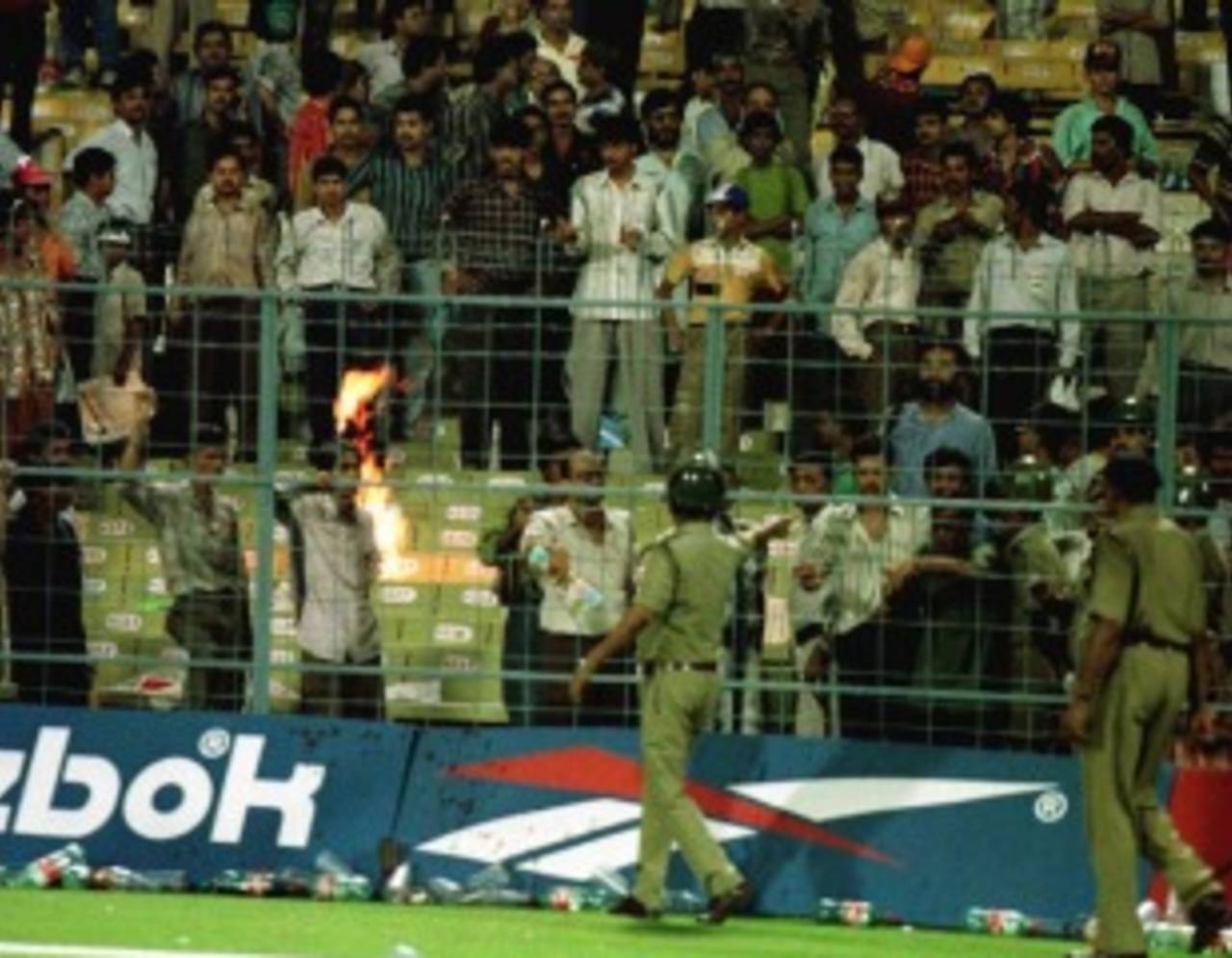Tape-delayed cricket in 2011
This year, thanks to the vagaries of television rights allocations, US residents are back to the good old days of the tape-delayed broadcast
Samir Chopra
25-Feb-2013

'Sadly, this is how I stumbled upon the disastrous riot at Calcutta in the semi-finals' • Getty Images
This year, thanks to the vagaries of television rights allocations, US residents, if inclined to follow the IPL, and to retain some suspense for themselves, are back to the good old days of the tape-delayed broadcast. It might be 2011, but it feels delightfully old-fashioned. The challenges of not being exposed to the scores are harder but a fan can always find his way around them.
Dealing with tape-delay broadcasts is not just a matter of television of course. Indians old enough to have followed radio broadcasts of Test cricket from the West Indies will remember that the post-tea session, which would have been broadcast from (I think) 2-4 AM, was instead taped and then played back from 5-7 AM. I would, after listening to the pre-tea sessions, sleep with a transistor next to my pillow, and on waking up, tune in again.
The illusion was perfect; how could it not be? There was no way to find out the scores and the only intervening experience had been that of sleep. It was thus that I heard the commentary for what I still consider one of the most exciting Test finishes of all (albeit at India's expense): West Indies' chase of 172 runs in 25 overs in the 1983 Kingston Test. I awoke on the chilly morning of 28th February 1983, just in time to catch Roberts' demolition of the Indian tail, as India subsided from 168 for 6 to 174 out. Suddenly, West Indies were in with a chance, even though they'd have to score at close to seven runs an over. But then Viv Richards played, what was by his own judgment, his best innings ever, to score 61 off 36 deliveries; Gus Logie hit a six off the first ball he faced in the second innings; Mohinder Amarnath lost the plot. When the match ended, I hooped and hollered; it was a great finish; I wanted a result; it didn't matter that India had lost to the mighty West Indies. Losing to West Indies, wasn't such a disgrace, really.
When the 1996 World Cup rolled around, I was living with my girlfriend in Manhattan, and working in the Bronx. The day-night games began early in the morning and ended in the afternoon. I would only be able to watch an over or two live before I had to leave for work to begin the long subway ride on the D train, uptown to the Bronx. The extended-play mode of the videocassette, and an extremely patient girlfriend came to the rescue. I would leave after having set up the VCR with a tape in EP mode; my girlfriend, who worked at Rockefeller Center, would walk back at lunchtime to our apartment, change the tape, and then return to work; the two tapes added up to more than eight hours, more than enough for a one-day international. Fortunately, my workplace's technology infrastructure was primitive enough to not have an internet connection, and I discouraged phone calls from friends calling in with tales of grief or joy in response to cricket happenings during the day.
When I returned home in the evenings from work, I was in a state of blissful ignorance. The tape of the match was waiting, full of pleasures yet to be discovered. I would then watch the tapes till 2AM, resisting the urge, not a particularly strong one, mind you, to fast forward. Sadly, this is how I stumbled upon the disastrous riot at Calcutta in the semi-finals.
Tape-delay will possibly never go away, so long as we want to maintain the pleasures of suspense in sports. And its even easier now, thanks to broadband video subscriptions with their stored highlights and replays. Sure, you've got to keep your eyes off that live scorecard while the game is on, but that's a small price to pay. Still, I'd rather the tape-delay imposition be a voluntary one, not the kind forced on me.
Samir Chopra lives in Brooklyn and teaches Philosophy at the City University of New York. He tweets here